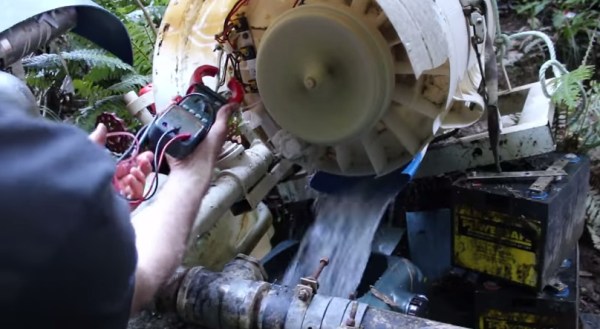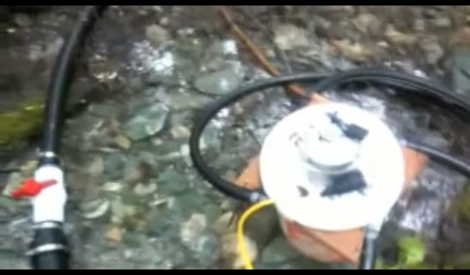Living off the grid is an appealing goal for many in the hacker community, perhaps because it can fulfill the need to create, to establish independence, to prepare for the apocalypse, or some combination of all those things. [Buddhanz1] has been living off the grid for awhile now by harnessing power from a nearby stream with an old washing-machine-turned-generator.
He started with a Fisher & Paykel smart drive, which he stripped down to the middle housing, retaining the plastic tub, the stator, the rotor, the shaft, and the bearings. After a quick spot check to ensure the relative quality of the stator and the rotor, [Buddhanz1] removed the stator and rewired it. Unchanged, the stator would output 0-400V unloaded at 3-4 amps max, which isn’t a particularly useful range for charging batteries. By rewiring the stator (demonstration video here) he lowered the voltage while increasing the current.
The key to this build is the inclusion of a pelton wheel—which we’ve seen before in a similar build. [Buddhanz1] channeled the water flow directly into the pelton wheel to spin the shaft inside the tub. After adding some silicon sealant and an access/repair hatch, [Buddhanz1] painted the outside to protect the assembly from the sun, and fitted a DC rectifier that converts the electricity for the batteries. With the water pressure at about 45psi, the generator is capable of ~29V/21A: just over 600W. With a larger water jet, the rig can reach 900W. Stick around for the video after the break.













